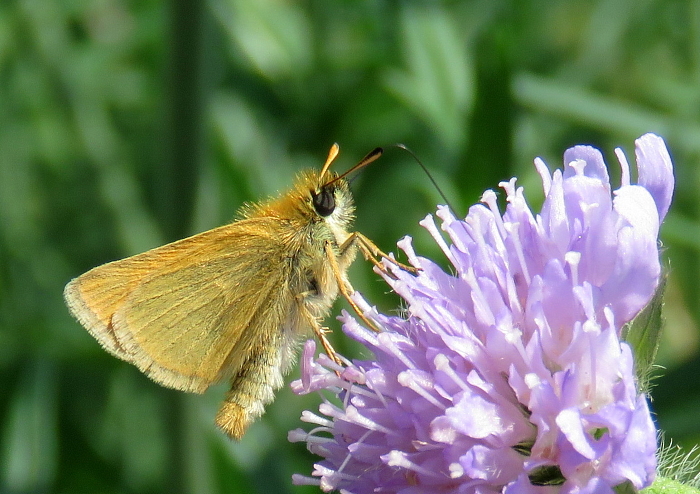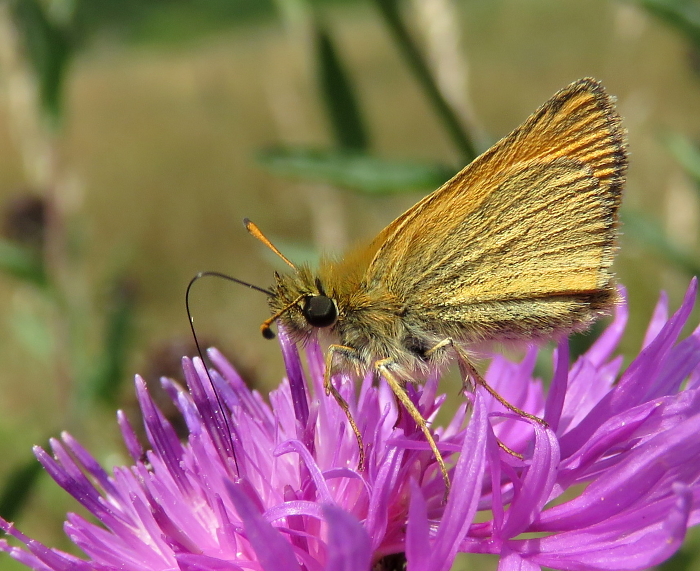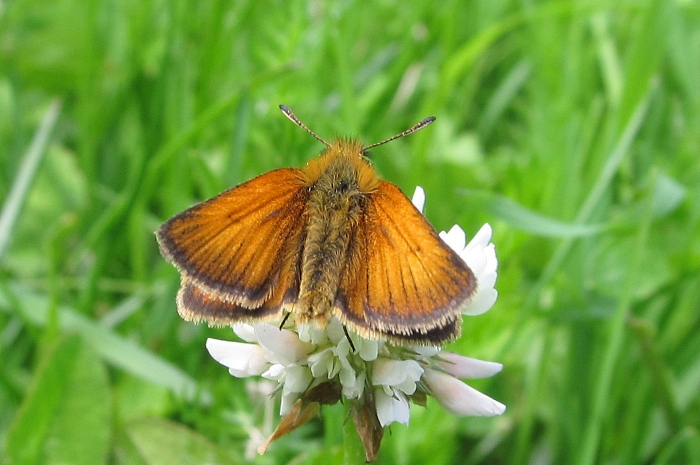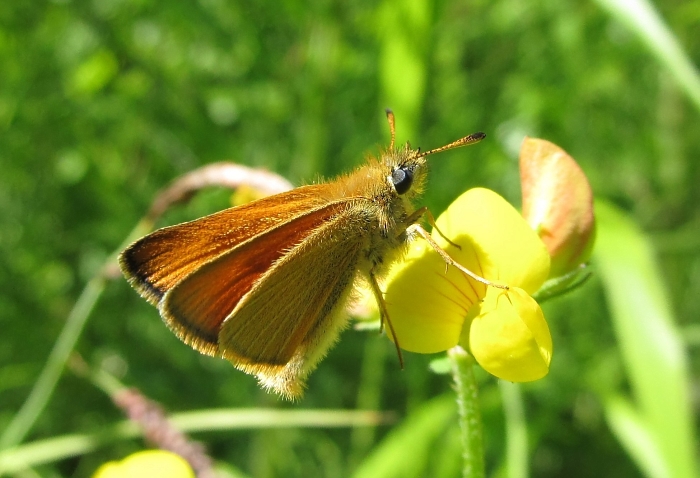
Male, Suffolk, UK, July 2020

Male, Suffolk, UK, June 2020

Male, Suffolk, UK, June 2020

Male, Suffolk, UK, June 2020

Male, Switzerland, July 2014

Male, Switzerland, June 2013

Male, Switzerland, June 2008

Switzerland, July 2007

Distribution
Because of its similarity
to the small
skipper, the Essex skipper was not recognised as a species in the UK
until 1889, when it was discovered in Essex - hence the name. In those
days it probably was restricted to south-eastern England but it has
since expanded its range and is now found widely and commonly over the
southern half of the country. It has even crossed the Irish sea and is
found very locally in Ireland. It is widespread and generally common
throughout most of Europe except for the far north, flying in meadows,
hillsides and woodland clearings with long grass and plenty of flowers
right up to alpine altitudes.
Both sexes can be separated from the small skipper by the antennae,
which are all black at the tip, above and below. Small skippers are
buff or reddish below. In addition, males may be recognised by the
short, straight sex brand, broken at v.2. The small skipper has a long,
decurved sex brand, crossing the vein. The undersides are more subtly
different. While small skippers generally have a rather well demarcated
greenish area at the apex of the forewing and the same colour on the
hindwing, Essex skippers are more unicolourous golden brown beneath,
with a hint of grey or green but not so well demarcated on the
forewing. On the upperside, the dark margins of the wings tend to leak
inwards along the veins in Essex skipper, while the margins are
typically cleaner in small. This is not always the case though - small
skippers may show creeping dark on the upperside, especially on the
veins and especially late in the season I find.
The larvae will eat a great variety of grass species. They hibernate
fully formed within the egg, waiting until the following spring to feed
up and pupate. Adults fly in a single generation from June to August in
central and northerly countries, and from May to July further south.














